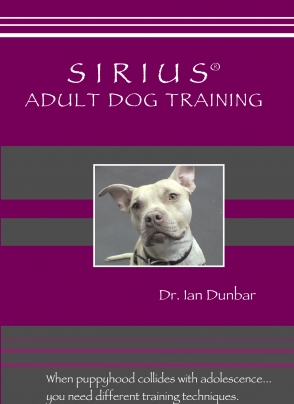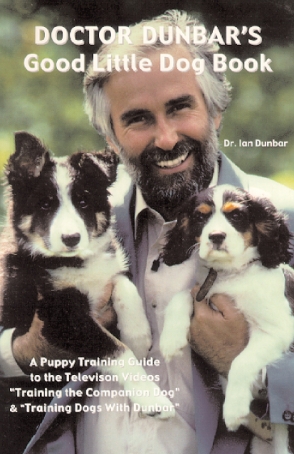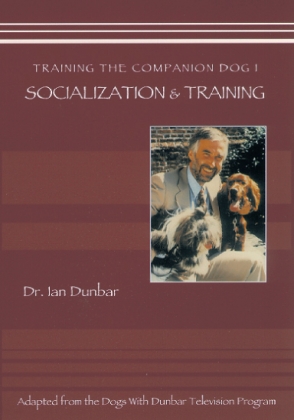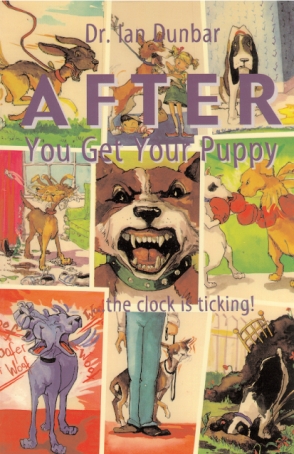When puppyhood collides with adolescence... you need different training techniques. Successful adult dog training requires controlling the dog’s energy and reactivity to regain attention.
Give A Puppy A First Chance
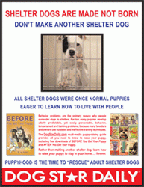
There is lots of talk these days about giving second chances, and there is certainly nothing wrong with that in most cases. However, why not do our best to give every puppy and every dog owner a first chance? We have the ability to go a long way towards resolving the shelter problem and to change the quality of life for dogs and their owners by letting all prospective puppy buyers know that they should only consider buying housetrained, chewtoy-trained, socialized and mannerly pups and then continue to raise them according to Open Paw’s Minimum Mental Health Guidelines. Please email the URL to this page to every dog owner, prospective dog owner or dog professional that you know.
Usually at this time of the year, I advise people not to impulsively buy a puppy. This is the season when many shelter dogs are manufactured simply because new puppy owners are unaware of how to select a puppy and how to raise a puppy. However, this year, I am addressing my column to all those people who are going to ignore my advice and get a puppy anyway.
When choosing a puppy at eight weeks of age, please bear in mind that either you may purchase a well-socialized, housetrained, chewtoy-trained puppy that knows how to come, sit, lie down and rollover on cue, or you may purchase a lemon — an unsocialized, unhousetrained, chewing, yapping puppy with little if any manners. The puppy’s behavior and temperament depend almost entirely on how the breeder has raised the pup. Make sure that you choose a puppy that has been raised in a home with plentiful human contact and guidance to prepare it to enjoy living in a home with people.
Now, by saying that a dog is housetrained and chewtoy-trained at eight weeks of age, I mean that the eight-week-old pups exclusively eliminate in a doggy toilet and exclusively chew chewtoys. However, their education is far from complete; teaching house rules and socialization are not done-deals at eight weeks of age. On the contrary, training and socialization continue in earnest until the dog is at least two or three years old. Then things will likely go smoothly for a while until the dog’s geriatric years, when training and socialization need to be revamped once more. The point is: if a puppy is making housesoiling or chewing mistakes at eight weeks of age then the established bad habits will make housetraining and chewtoy-training more difficult for the new owners and if the pup is still making mistakes at three months of age, retraining will be even more difficult. More disturbing, if the pup was not sufficiently socialized before eight weeks of age, permanent damage has been done. If the pup was not sufficiently socialized before three months of age, massive permanent damage has been done and it is extremely likely that the dog will become fearful and maybe aggressive when five, six or eight months old.
The breeder will most certainly ask you lots of questions to determine whether they think you are a suitable potential puppy owner. Similarly, you want to ask the breeder lots of questions to check on the puppy’s educational and behavioral developmental status. You want to ascertain whether or not the breeder has raised the puppies according to Open Paw’s Minimal Mental Health Guidelines.
First, check the puppies’ living area to make sure that there is a toilet in the corner opposite from the bed and that the puppies have been using the toilet exclusively. If the puppies have been urinating and defecating anywhere and everywhere, that’s exactly what they’ll continue to do when you take them home. It’s always a good plan to purchase a housetrained puppy and continue the errorless housetraining procedure at home.
Second, check that there are numerous chewtoys that have been stuffed with moistened kibble. Young puppies should be fed only from chewtoys to make sure that food is apportioned fairly and one bully puppy doesn’t get more than his fair share and of course, so that the puppies all develop early chewtoy habits. Always remember that good habits are just as hard to break as bad habits. Puppies lie down calmly and quietly while chewing. If the breeder has not chewtoy-trained the puppies, most likely they will destructively chew anything and everything in your home and they will become recreational barkers that are much more prone to developing home alone problems and separation anxiety.
Third, ask the breeder to demonstrate that at the very least, the puppies have all been taught to come, sit, lie down and roll over on cue. If the breeder says that they haven’t taught the puppies to sit because they are “show dogs”, leave the puppies with the breeder because they certainly have not been trained to be companion dogs.
Most important, check that all of the puppies are confident and friendly, approach happily and readily and enjoy being handled by all family members. Ask the breeder how many people have played with and handled the puppies. As a guideline, puppies need to be handled by at least 100 people (especially children and men) before they are eight weeks old and then meet another 100 people during the first month in their new home. The Critical Period of Socialization is almost two thirds over by eight weeks of age and the puppies must be fully socialized before attending puppy classes at three months of age. Inviting people to come and socialize with the puppies is perfectly safe, just as long as outdoor shoes are left outside. (Parvovirus is spread via feces.)
Before you are seduced by a cute and loveable puppy, it’s a good plan for all family members to first meet and test drive the puppies’ parents, grandparents and any other adult dogs at the kennel in order to gauge how the puppy will likely act as an adult.
For more information about puppy selection, raising and training, download the free books BEFORE You Get Your Puppy and AFTER You Get Your Puppy here. Raise and train your puppy well so that your puppy can look forward to a good life for life — enjoying your home forever. Remember, puppyhood is the time to “rescue” adult shelter dogs. Please don’t raise another shelter dog.

